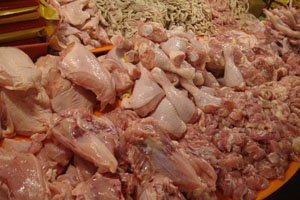UK: Poultry sector at risk of food fraud

The poultry sector faces an increased risk of food fraud, which could cost individual businesses dearly and damage the reputation for all.
Addressing the South West Chicken Association conference near Bristol, Louise Manning from the Royal Agricultural University, Cirencester, explained how the complexity of the meat supply chain provided opportunities for fraud.
Freedom of movement within the EU meant checks were often left to the companies themselves, while increased processing made it easier to lose traceability.
“I can look at a chicken on a supermarket shelf and know it is a chicken,” she said. “But the minute you start breaking down a carcass into individual pieces or a meal, it becomes harder and harder.”
Food assurance schemes tended to verify the process of production, but not the product itself, she added. And since 2008, consumers had been moving increasingly to composite foods, while household budgets had come under pressure.
“In the poultry supply chain we can see there is an opportunity to lose product identity, to lose provenance, and an environment for food crime to flourish.”
While there had been a number of prosecutions for food crime, including in the poultry sector, the penalties were minimal compared to the potential gains. “If I was an illicit person, and I had the choices of drug running, people trafficking or food crime, I’d pick food crime,” said Dr Manning.
A market where prices were falling presented its own vulnerability, as suppliers looked to cut corners – as had happened with tumbling chicken to absorb more water several years ago, when beef and pork protein was added illegally.
Food fraudsters were “entrepreneurial”, she added, looking for any gap in the market where testing was weak and profits could be made.
Even though this was harder in highly integrated supply chains, such as poultry, the sector should not sit on its laurels. “As an industry we have to think how we are going to protect the integrity of our products.”
That would include things like more product testing, better auditing and tighter risk assessments. Greater use of CCTV and even fingerprint technology to control access might be necessary.
Source: Philip Clarke, Farmers Weekly





![Birthe Steenberg, AVEC’s Secretary General: “Our [poultry] sector operates under the highest standards of animal welfare, biosecurity and sustainability in the world. Photo: Canva](https://www.poultryworld.net/app/uploads/2024/10/Untitled-design-79-389x260.jpeg)







